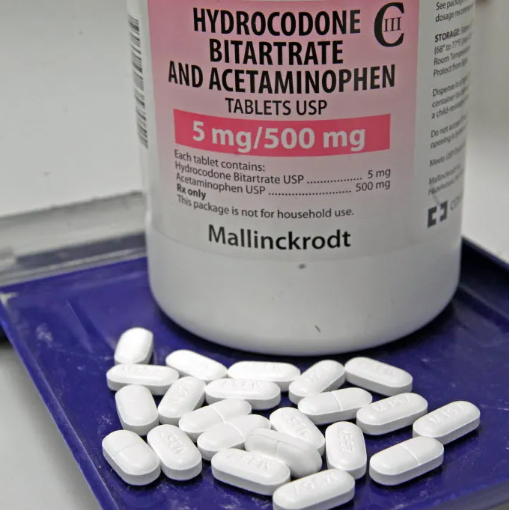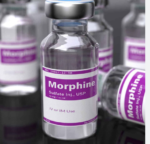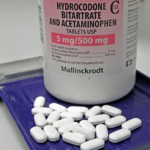Hydrocodone dependence and abuse are serious issues due to the drug’s potent opioid properties, which can lead to physical dependence, addiction, and overdose if misused.

Here’s an overview of hydrocodone dependence and how hydrocodone abuse is treated:
1. Hydrocodone Dependence
Dependence occurs when the body adapts to the presence of hydrocodone, and a person needs to continue using the drug to avoid withdrawal symptoms. This can develop even with legitimate use over a prolonged period, especially at higher doses.
Signs of Hydrocodone Dependence:
- Tolerance: Needing higher doses to achieve the same effects.
- Withdrawal Symptoms: When hydrocodone use is stopped, withdrawal symptoms appear, including:
- Muscle aches
- Sweating
- Insomnia
- Irritability or anxiety
- Diarrhea
- Nausea and vomiting
- Continued Use Despite Negative Consequences: Using hydrocodone even when it causes physical, mental, or social harm.
2. Hydrocodone Abuse
Hydrocodone abuse is a significant public health issue due to the drug’s addictive potential and its widespread use as a prescription pain reliever. Hydrocodone is an opioid analgesic, often prescribed to treat moderate to severe pain or as a cough suppressant in some cases. While effective for these medical purposes, hydrocodone’s ability to induce feelings of euphoria and relaxation makes it prone to misuse and addiction.
Hydrocodone is commonly found in combination with acetaminophen (as in Vicodin or Norco), ibuprofen, or other medications to enhance its pain-relieving effects. Abuse occurs when individuals use the drug in ways other than prescribed—whether by taking larger doses, using it for recreational purposes, or obtaining it without a prescription.
Hydrocodone abuse is a serious issue with far-reaching consequences for individuals and society. While the drug is effective for managing pain when used as prescribed, its addictive properties make it highly dangerous when abused. The key to addressing hydrocodone abuse lies in early intervention, awareness, and access to comprehensive treatment options to help individuals recover from addiction and avoid the life-threatening consequences of opioid misuse.
Abuse refers to taking hydrocodone in ways other than prescribed (e.g., taking higher doses, using it for non-medical reasons like euphoria, or crushing and snorting it). Abuse increases the risk of overdose, addiction, and long-term health complications.
Signs of Hydrocodone Abuse:
- Craving the drug and obsessing over when and how to take the next dose.
- Doctor shopping to get more prescriptions.
- Taking hydrocodone in ways not prescribed, such as crushing and snorting it or taking it with other substances like alcohol.
- Loss of interest in hobbies, work, or personal responsibilities due to drug use.
- Social withdrawal and isolation.
3. Treatment for Hydrocodone Abuse and Dependence
Treating hydrocodone abuse requires a comprehensive approach that addresses both the physical and psychological aspects of addiction. There are several evidence-based methods used to help individuals overcome opioid dependence and addiction.
Treatment Methods:
1. Medical Detoxification
- Supervised Withdrawal: Detox is often the first step in treating hydrocodone dependence. It involves a gradual reduction of the drug under medical supervision to minimize withdrawal symptoms and prevent complications.
- Medication-Assisted Treatment (MAT): During detox, doctors may prescribe medications to ease withdrawal symptoms and reduce cravings, including:
- Buprenorphine (Subutex, Suboxone): A partial opioid agonist that helps reduce cravings and withdrawal symptoms without causing euphoria.
- Methadone: A long-acting opioid used to reduce cravings and manage withdrawal symptoms. It is often used in maintenance therapy for opioid addiction.
- Naltrexone: An opioid antagonist that blocks the effects of hydrocodone and other opioids. It’s often used after detox to prevent relapse.
- Clonidine: A non-opioid medication used to reduce symptoms such as anxiety, agitation, muscle aches, sweating, and runny nose during withdrawal.
2. Behavioral Therapy and Counseling
- Cognitive Behavioral Therapy (CBT): Helps individuals recognize and change negative thought patterns and behaviors associated with drug use. CBT also teaches coping mechanisms to handle triggers for relapse.
- Motivational Interviewing (MI): A therapeutic approach that helps individuals resolve ambivalence about quitting and enhances their motivation to change.
- Contingency Management (CM): Provides positive reinforcement (e.g., vouchers or rewards) for staying drug-free, attending therapy sessions, and meeting recovery goals.
- 12-Step Programs: Peer support programs like Narcotics Anonymous (NA) offer a community of individuals recovering from opioid abuse. These programs emphasize accountability and peer support.
3. Inpatient or Outpatient Rehabilitation
- Inpatient Rehab: For severe cases of hydrocodone addiction, inpatient rehab offers intensive, structured care in a hospital or residential setting. It provides round-the-clock medical support and a highly controlled environment to prevent relapse.
- Outpatient Rehab: For milder cases or after inpatient treatment, outpatient programs provide therapy, medication management, and support groups while allowing individuals to continue living at home.
4. Long-Term Maintenance and Relapse Prevention
- Maintenance Therapy: Long-term use of medications like buprenorphine or methadone can help manage cravings and prevent relapse in those with severe opioid addiction.
- Naltrexone: This medication can be prescribed long-term to block the effects of opioids, reducing the risk of relapse.
- Support Groups: Continued involvement in support groups and peer networks is essential for long-term recovery.
5. Addressing Co-Occurring Disorders
Many people struggling with hydrocodone addiction also have underlying mental health conditions such as anxiety, depression, or PTSD. An integrated treatment plan that addresses both substance use and mental health is essential for a successful recovery.
6. Aftercare and Continued Support
- Follow-up Therapy: Regular therapy sessions after initial treatment help reinforce coping skills and prevent relapse.
- Sober Living Homes: Transitional living environments provide ongoing support and accountability while reintegrating into daily life.
- Family Counseling: Addiction often affects family relationships, and counseling can help rebuild trust and improve communication.
Pain Medications, Pain Relief, and Pain Management


